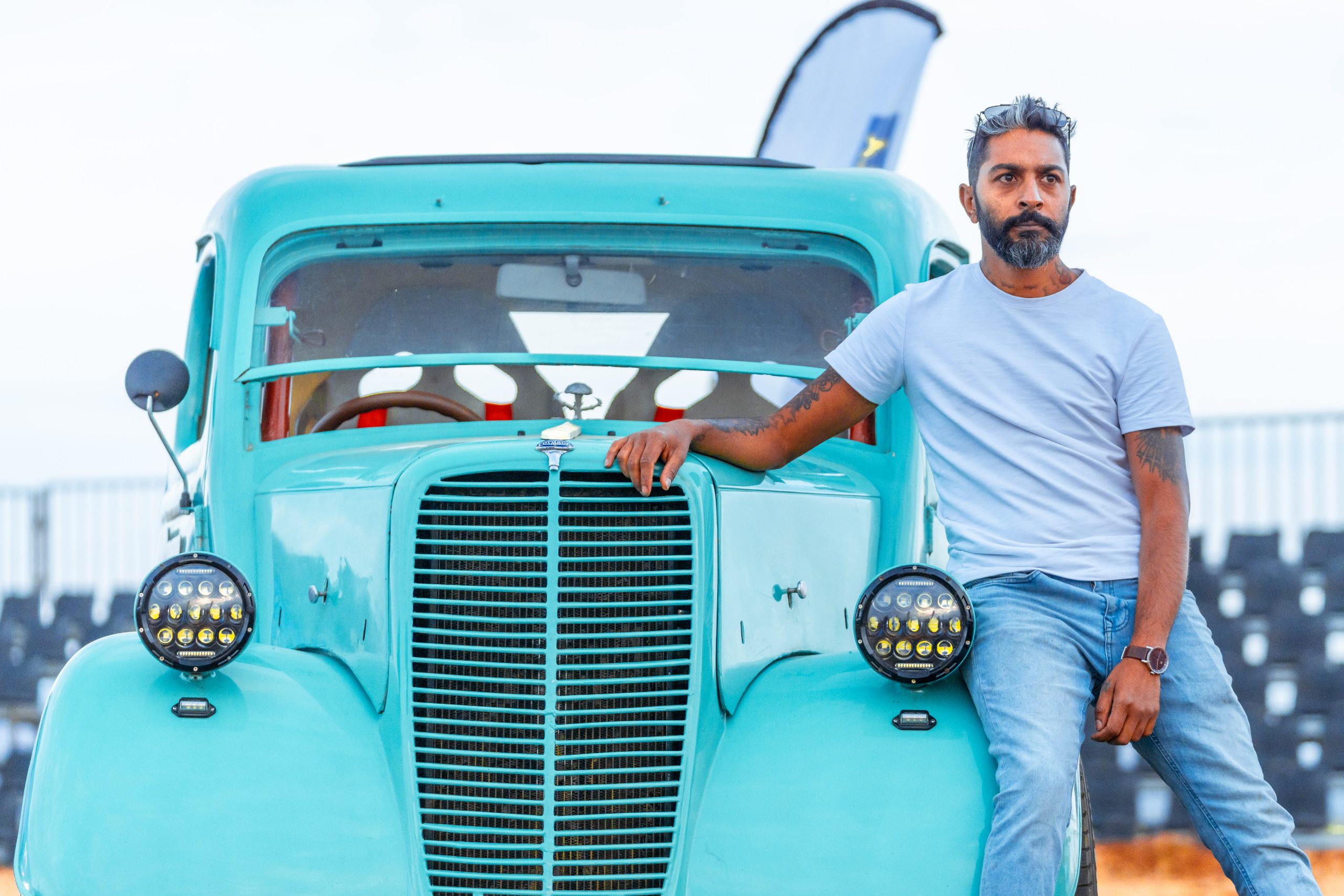By Stephen Macharia
Calvin de Souza, having grown up in Nairobi, spent his teenage years working part-time at his father’s garage. He has since charted a new path in vehicle restoration and modification commonly known as RestoMods in the car community.
He has increased his brand (deSouza built) recognition in Kenya’s automotive industry through creative vehicle modifications. For example, he turned an old dilapidated tractor into a pickup truck he named Fungus.
Fungus is the first mid-engined v8 pickup in Africa. Calvin is documented as saying that everything on the car is fabricated using local materials and that all the car parts are locally sourced.
“I got this vehicle from a farm. It was a tractor with only its front part remaining. All other parts were rusty. To complete this project, I sourced parts from several local suppliers,” he revealed and what I could not get had to be fabricated from scratch.
“We call it fungus because when we picked it up it had rust, mould, moss, and mushrooms growing in and on it. This vehicle was rotten and beaten up. Its owner at the time must have been surprised that someone wanted to purchase it,” he said.
When AutoNews arrived at his garage, the vehicle was parked on the side of the road. It was clean and glistening, and it appeared to be ready for the road.
“I built it specifically for drifting,” he explained to this writer. Calvin’s artistic prowess is evident in the vehicle. He designed the body and built the chassis for it. This vehicle has a V8 engine. It has a 4.8-litre engine, equivalent to a Lexus LX 470.
“I’m still working on it,” he admits. Calvin’s work has been at the centre of online automotive discussions.
His expertise in RestoMods has made him an internet sensation. One of his most recent restorations (the ‘hot-rod’), now known as “Kenya’s fastest hand-built car,” has taken several Kenyan roads. The ‘Hot-rod’ is a term typically used for American cars that might be old, classic, or modern and that have been rebuilt or modified with large engines optimised for speed and acceleration. The hot rod, just like fungus is built for drifting.
It was tested at the Machakos People’s Park last year and produced extraordinary capabilities. “We’re still perfecting it before we start doing drifting shows,” he told AutoNews Magazine.
He prefers to use engines and parts from Japanese vehicles because spare parts are readily available. Calvin, on the other hand, considers restorations to be an art, noting that vehicle restorations provide opportunities for the creative industry.
“As I restore and build vehicles, the safety of the driver, passengers, and the vehicle remains paramount. The good thing is that I have been in this industry since my childhood,” he told this writer.
Vehicle RestoMods entail getting old vehicles and installing new technologies. It may call for an overhaul of the vehicle.
“We get a new suspension, engine, lighting, and body works. Everything is to perfection. Our customers are usually specific about what they need and expect delivery of their expectations. A vehicle takes between 30-90 days to restore or rebuild.”
He states that he has completed numerous restorations since he started the business. “I have a car driven out of this garage every month. Under normal circumstances it takes under three months to complete the work,” he revealed.
He notes Kenya has a growing population of motorists who want unique vehicles.
“For example, I have built an old Peugeot 504 and fitted it with a Toyota Mark X engine, suspension, braked diff, gearbox, drive train, seats, and dashboards,” he says.
Calvin and his team market their work through social media. He stated that his goal is to dispel myths about car restorations.
“Many people believe that this business is only for the wealthy. That is not the case. “I want to show young people that the automotive industry is artistic,” Calvin said.
But not everything is rosy for the young mechanic and motor enthusiast. He cites a lack of knowledge on resto-mods as a challenge to the growth of this business.
Calvin gets challenges in getting some of his suppliers to customize parts even though they have the capability.
“It has been a challenge convincing suppliers to think outside the box and see more potential in new business. It is always difficult for me to make other people see my vision. Some suppliers, despite having a huge capacity to supply us with fabricated material, become hesitant when I approach them. This limits the creativity,” he told AutoNews Magazine.


